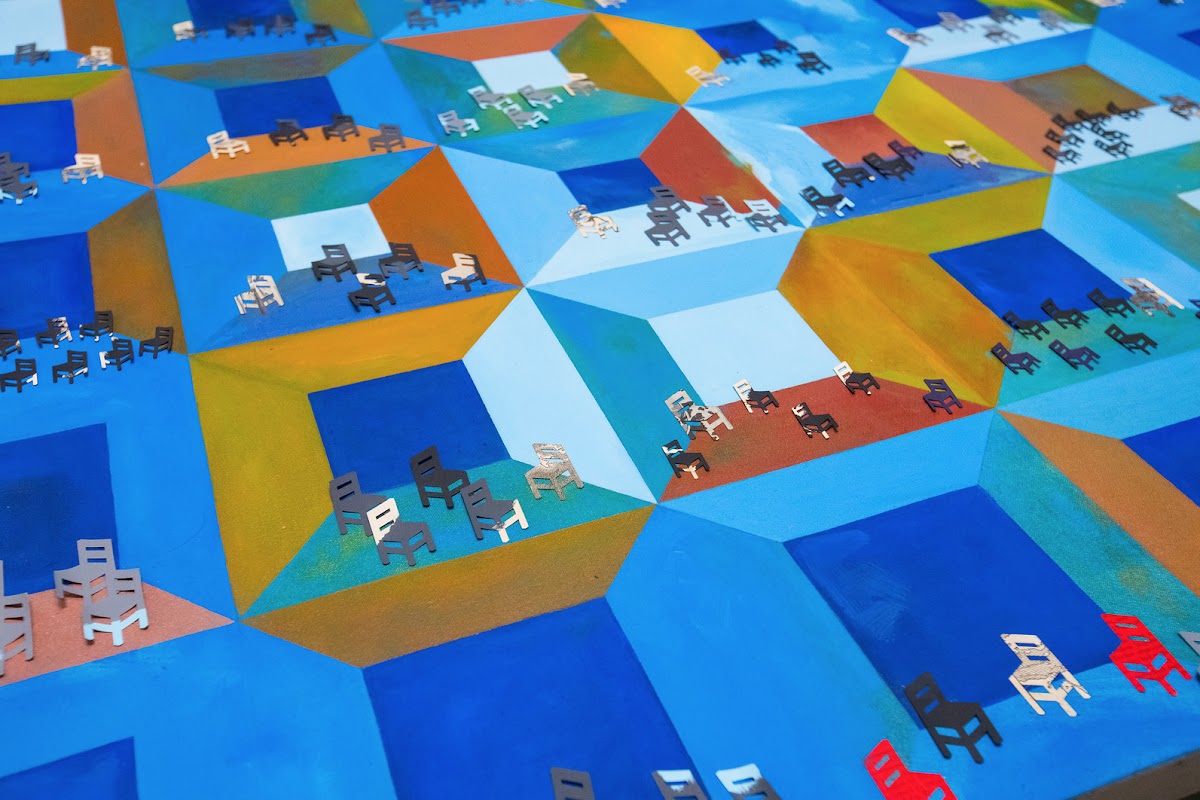Designing a More Equitable RISD

Matthew Shenoda, RISD’s first-ever vice president of Social Equity and Inclusion (SEI),assumed the new position in August, arriving with close to 20 years of experience as an expert in the field—both in the classroom and beyond. He served as the inaugural assistant provost for Equity and Diversity at CalArts and taught for nearly a decade at San Francisco State University in the first College of Ethnic Studies. Most recently, Shenoda was dean of Academic Diversity, Equity and Inclusion and a special advisor to the president as well as a professor of English and Creative Writing at Columbia College Chicago. Here he talks about efforts to ensure that all RISD students have the access, opportunity and support they need to thrive.
Based on your previous experiences, how do RISD’s efforts to build a more inclusive community compare to what’s happening at other colleges?
Similar issues around curriculum and faculty diversity exist at all academic institutions, particularly at art and design schools. But how we begin to engage in change has to be based on the specifics of the institution: history, community, geography, the city it’s situated in and so forth.

What are the major issues you’re hoping to address in your first year at RISD?
My first step is getting to know the community—in particular spending time with faculty and students. RISD has already been working to change its curriculum to address the fact that huge bodies of knowledge are missing from the conversation. I need to learn where faculty members are hitting roadblocks and leverage resources to help overcome them.
How important is it for students of color to work with teachers and mentors who look like them or share similar cultural backgrounds?
It’s absolutely necessary to have role models who look like you—people who come from your community and understand your lived experiences and history. Diversity pushes our thinking, our perspectives, our ideas. It’s critical to see the world from different angles, which is a core principal of art: shifting perception in some way.

RISD’s recently developed SEI plan outlines quite a few next steps—from reporting procedures to the creation of an advisory council. What do you think our most pressing priorities should be?
The SEI plan is an important and necessary blueprint, but I fully expect that we’ll shift things a bit as we go forward and begin to understand some of the nuances of the moment. I have met and engaged with some administrative and academic leaders, but I need to spend time with faculty and particularly with students. They are an essential piece to my understanding of the path moving forward.
“People of color are charged with taking on the burden of fixing a problem they didn’t create.... It’s exhausting. I get it.”
Are you aware of Room of Silence, the film RISD students made in 2016 in response to a lack of meaningful critique around work focused on race and racism?
Absolutely. Room of Silence was very popular outside of RISD. In fact, I screened it in order to prompt a conversation with faculty at one of my former institutions. The willingness of RISD students to take a very public and formal stand in response to these issues has opened up the possibility for real change here—something RISD should be proud of.
How do you respond to students who say it shouldn’t be their job to lead the change—that it’s the administration’s responsibility?
They’re absolutely right. It’s unfair. People of color are charged with taking on the burden of fixing a problem they didn’t create. I lived through that as a student myself and as a faculty member. It’s exhausting. I get it. But the work has to be done. If we don’t step up and do the work, nothing will change. I hope to lessen that burden for students at RISD—to make sure they don’t burn out.
Do you see any immediate solutions to the problems related to studio critiques (like bringing in more guest critics)?
In the short term, yes, we do need guest critics and new faculty members with different areas of expertise. But as educators, each of us has a responsibility to continue to educate ourselves. If we’re uncomfortable or unable to respond to certain bodies of work, we have to do some work and figure that out. I hope my office can give people the resources to help them do that.
This is an interesting moment. Artists are out in the world doing the work, and approaches at museums are shifting. There’s still a long way to go, but [artists, curators and critics] are having essential conversations that will impact art and design education and shift our values and hierarchies.
Are you working with staff members at the RISD Museum on this front as well?
Yes, I’ve been speaking with [Museum Director] John Smith and other members of the staff and I see them as critical partners in this effort. They’re engaged in forthright conversations about what it might mean to be a decolonized museum. Is that even a possibility? What would it look like?

RISD as a whole is at the forefront of artists and designers doing serious, globally engaged work. If we can plug SEI into what RISD is already succeeding at—in an organic, honest, sustainable way—and if we can pilot new ways of approaching an art and design education, we can open doors that we didn’t know existed and see things we didn’t know were possible. I fundamentally believe that or I wouldn’t be here.
—interview by Simone Solondz
August 28, 2018